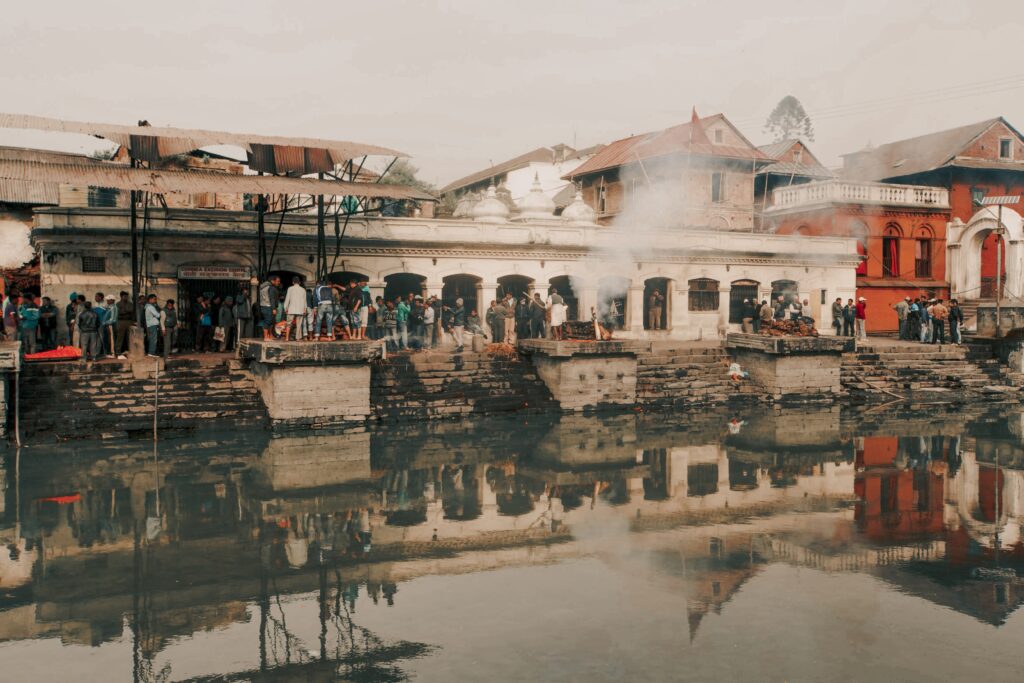
The history of cremation is fascinating and informative. According to scholars, the practice began in Europe and the Near East during the early Stone Age, around 3000 B.C. Cremation slowly spread across northern Europe and into Spain and Portugal during the late Stone Age. As the Bronze Age came about, cremation moved into the British Isles, while cemeteries for cremation developed in Hungary and northern Italy. Eventually, it spread to the north of Europe and Ireland.
During the Mycenaean Age, which started around 1600 B.C., cremation became integral to the Grecian burial custom. By the time of Homer in 800 B.C., it had become the most popular mode of disposition in Greece and was encouraged for reasons of health and expedient burial of slain warriors in the battle-ravaged country. Following this trend, the early Romans probably embraced cremation around 600 B.C. It became so prevalent that an official decree had to be issued in the mid-5th century against the cremation of bodies within the city. By the time of the Roman Empire, cremation was widely practiced, and cremated remains were stored in elaborate urns, often within columbarium-like buildings.
The practice remained rare among early Christians and Jews, who preferred traditional sepulcher entombment. By 400 A.D., due to Constantine’s Christianization of the Empire, earth burial had completely replaced cremation, except for rare instances of plague or war. For the next 1,500 years, earth burial remained the accepted mode of disposition throughout Europe.
The Modern Age of Cremation
Modern cremation as we know it began only a little over a century ago after years of experimentation into the development of a dependable chamber. Professor Ludovico Brunetti of Italy finally perfected his model and displayed it at the 1873 Vienna Exposition. The cremation movement started almost simultaneously on both sides of the Atlantic.
In the British Isles, Queen Victoria’s surgeon, Sir Henry Thompson, fostered the movement. Concerned with hazardous health conditions, Sir Henry and his colleagues founded the Cremation Society of England in 1874. The first crematories in Europe were built in 1878 in Woking, England, and Gotha, Germany. Meanwhile, in North America, although there had been two recorded instances of cremation before 1800, the actual start began in 1876. This was pioneered by Dr. Julius LeMoyne as he built the first crematory in Washington, Pennsylvania. In 1884, the second crematory opened in Lancaster, Pennsylvania. As was true of many of the early crematories, it was owned and operated by a cremation society.
Other forces behind early crematory openings were Protestant clergy who desired to reform burial practices and the medical profession concerned with health conditions around early cemeteries. Crematories soon appeared in Buffalo, New York, Pittsburgh, Cincinnati, Detroit, and Los Angeles. By 1900, there were already 20 crematories in operation. By the time Dr. Hugo Erichsen founded the Cremation Association of America in 1913, there were 52 crematories in North America. Over 10,000 cremations took place in that year.
The Expansion of Crematories
The first modern crematory in the US was built in Washington, Pennsylvania, in 1876, and others quickly followed it in Lancaster, Pennsylvania, Buffalo, New York, Pittsburgh, Cincinnati, Detroit, and Los Angeles. By 1900, there were already 20 crematories in operation across the country. The movement was also growing in Europe. Here, the first modern crematories were built in Woking, England, and Gotha, Germany, in 1878.
Over the years, the popularity of cremation has continued to grow, with the Cremation Association of North America reporting that in 1999, 595,617 cremations took place in the United States, accounting for 25.39% of all deaths. By 2019, this figure had risen to over 1,500,000 cremations, representing 54.6% of deaths in the country.
Rising Popularity of Cremation
One of the reasons for the growing popularity of cremation is that it is seen as a more environmentally friendly alternative to traditional burial. In a traditional burial, the embalming fluid used to preserve the body can leach into the ground and contaminate soil and groundwater. In addition, cemeteries take up large amounts of space, becoming increasingly scarce in many urban areas.
Conversely, cremation does not require embalming. The ashes can be scattered in a location of the family’s choosing or kept in an urn in the home. Cremation also takes up much less space, which is a consideration in crowded urban areas.
The growth of cremation can also be attributed to the increasing diversity of religious and cultural beliefs in the United States. While some religions, such as Judaism and Islam, do not permit cremation, many others, including Christianity and Buddhism, do not have any specific prohibitions against it. In addition, as more people move away from traditional religious affiliations, they may be less attached to traditional burial practices. This can make them more open to alternative methods of disposition.
Benefits of Cremation
Cremation also offers greater flexibility in terms of timing and location of the service. With a traditional burial, the funeral must typically take place within a few days of death and is often held at a funeral home or church. With cremation, the service can be held at any time and in any location, providing families with greater flexibility to plan a meaningful and personalized tribute to their loved ones.
Another factor that contributed to the increase in the popularity of cremation was the cost. Traditional burials can be expensive. The bulk of the charges include the casket, the burial plot, and the headstone. Cremation, on the other hand, can be a more affordable option. There are still costs associated with cremation, such as the urn and any funeral services or memorials. However, the overall price is still significantly lower than that of a traditional burial.
Cremation Critics
Despite its many benefits, cremation is not without its critics. Some argue that it is disrespectful to the deceadent to burn the body. Meanwhile, others believe it is a sign of a culture increasingly disconnected from the natural world.

In addition, concerns have been raised about the environmental impact of cremation. Particularly in releasing pollutants into the atmosphere. While modern cremation chambers are designed to minimize emissions, there is still some debate over how large-scale cremation could affect air quality.
Ultimately, the decision to choose cremation or traditional burial is personal. It will depend on various factors, including religious and cultural beliefs, environmental concerns, and personal preferences. For many families, cremation offers a meaningful and practical way to honor their loved one’s memory while respecting the environment.
Despite its increasing popularity, some cultural and religious traditions still prefer traditional burial over cremation. For example, in some cultures, it is believed that the body must remain intact for the afterlife, making cremation unacceptable. Similarly, some religions have specific funeral rites and burial practices that must be followed, which can exclude cremation as an option.
Summary
Ultimately, the Western history of cremation has gone through several phases. It began in the early Stone Age in Europe and the Near East before spreading across northern Europe during the late Stone Age. With the advent of the Bronze Age, cremation moved into the British Isles, Spain, and Portugal.
In the Mycenaean Age, cremation became integral to the elaborate Grecian burial custom. This spread to the Romans during the great Roman Empire. However, it was not embraced by early Christians or Jewish culture. Modern cremation began in the late 19th century, and since then, its popularity has steadily risen. A couple of the driven factors are cost and environmental concerns. Although all cultures and religions are not accepting of it, cremation has become a mainstream option for many people seeking alternatives to traditional burials.
Learn more about the deathcare industry by checking out the rest of our blog at Deathcare Diaries.
